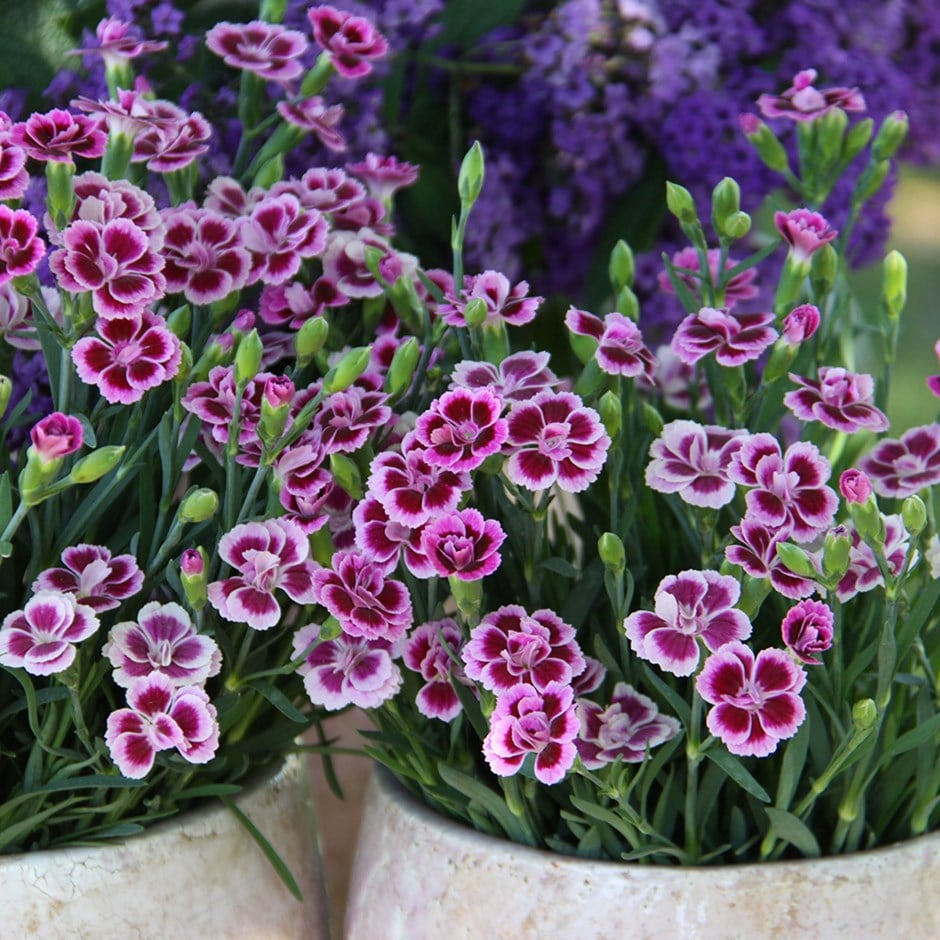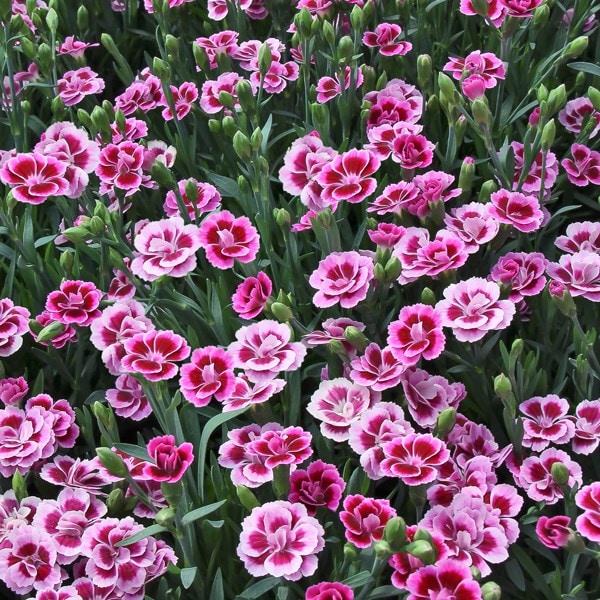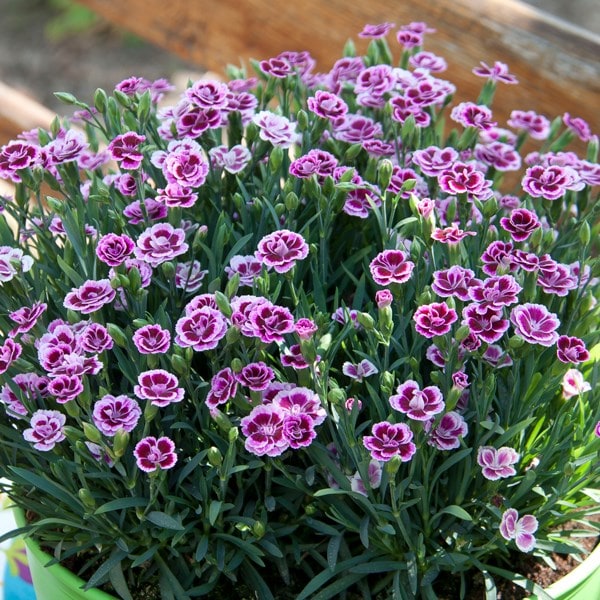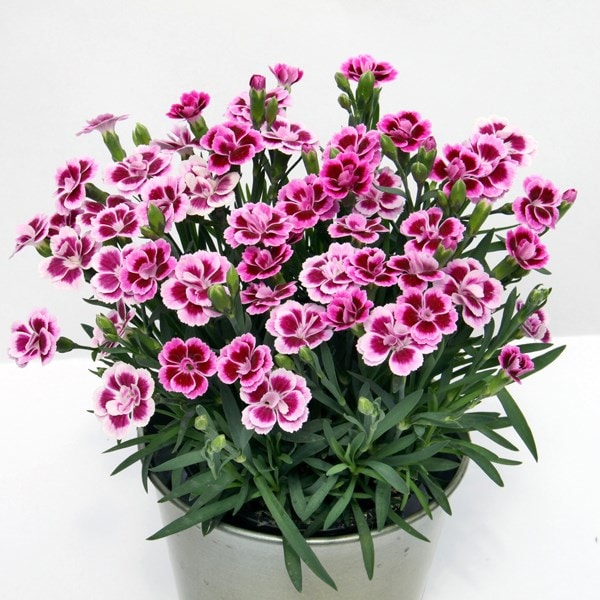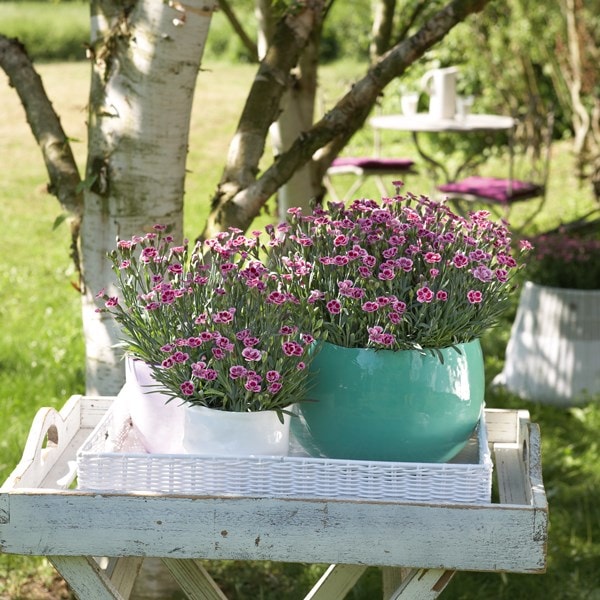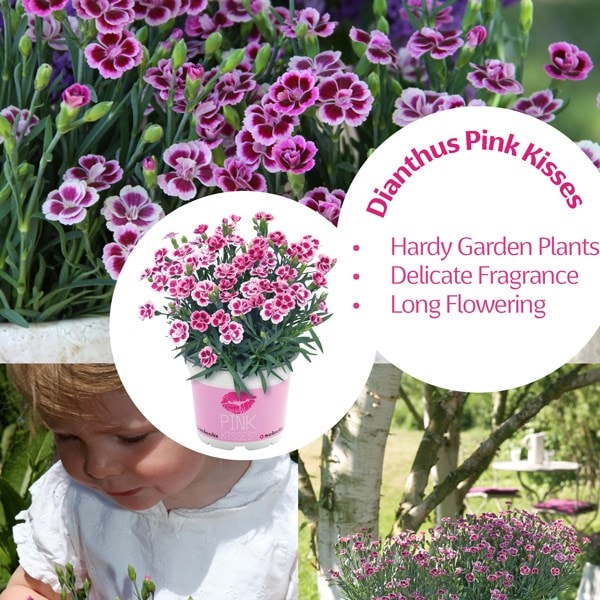Dianthus Pink Kisses ('Kledg12163') (PBR)
garden pinks / dianthus
- 9cm pot
- £6.99
- available to order from spring
- 2 + 1 FREE 9cm pots
- £13.98 £4.66 each
- available to order from spring
Delivery options
- Standard £5.99
- Position: full sun
- Soil: moderately fertile, moist but well-drained soil or general-purpose compost for containers
- Rate of growth: average
- Flowering period: June to September
- Hardiness: fully hardy
An incredibly prolific bloomer, this compact pink is great for pots and sunny borders, but it will also work well in an alpine bed or rockery. The lightly scented flowers are initially quite rich in colour, but as they age, the outer edge of each petal fades to a softer pink (almost blush), and this creates a distinctive two-tone effect.
This little gem thrives in a sunny spot, and if you keep on deadheading, Dianthus 'Pink Kisses' will repeat bloom year after year.
Please note that the pot in the photograph is not supplied with the plant (which is sent out in a simple nursery alternative), but we have a wide and wonderful range on our website to choose from.
This little gem thrives in a sunny spot, and if you keep on deadheading, Dianthus 'Pink Kisses' will repeat bloom year after year.
Please note that the pot in the photograph is not supplied with the plant (which is sent out in a simple nursery alternative), but we have a wide and wonderful range on our website to choose from.
Dianthus thrives in well-drained, alkaline soil enriched with well-rotted manure or garden compost. When planting, choose a sunny location with good air circulation. Space plants 30cm (12in) apart to allow for growth. Water deeply but infrequently (rather than little and often) to encourage deep root development, especially during dry spells.
In spring, apply a balanced granular fertiliser to promote healthy growth and abundant blooming. Mulch around the plants to retain moisture and suppress weeds, but keep the mulch away from the plant's crown to prevent rot. In areas with harsh winters, provide a light mulch for protection.
Deadhead regularly to extend the blooming period and maintain a tidy appearance. After the main flowering period, trim back lightly to promote new growth at the base of the plant.
In spring, as new shoots emerge, prune more closely to maintain a compact, tidy shape. This pruning regime helps rejuvenate the plant and encourages fuller, more vigorous growth.
In spring, apply a balanced granular fertiliser to promote healthy growth and abundant blooming. Mulch around the plants to retain moisture and suppress weeds, but keep the mulch away from the plant's crown to prevent rot. In areas with harsh winters, provide a light mulch for protection.
Deadhead regularly to extend the blooming period and maintain a tidy appearance. After the main flowering period, trim back lightly to promote new growth at the base of the plant.
In spring, as new shoots emerge, prune more closely to maintain a compact, tidy shape. This pruning regime helps rejuvenate the plant and encourages fuller, more vigorous growth.
- Humans/Pets: Skin allergen
